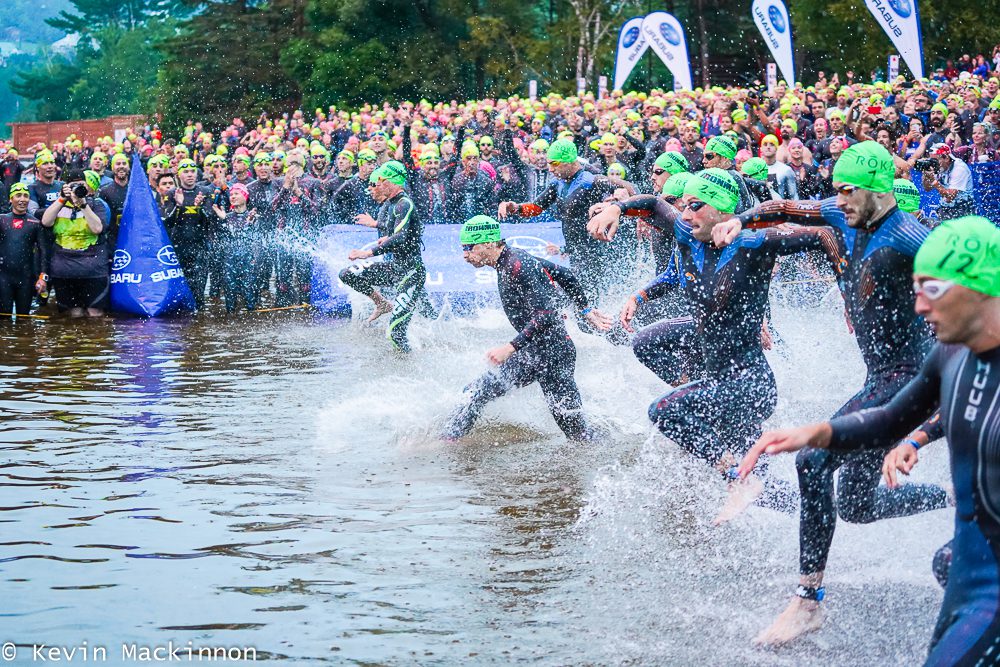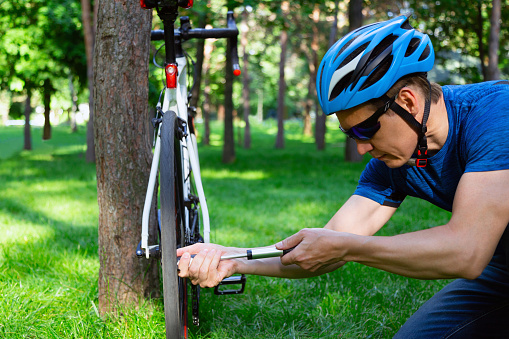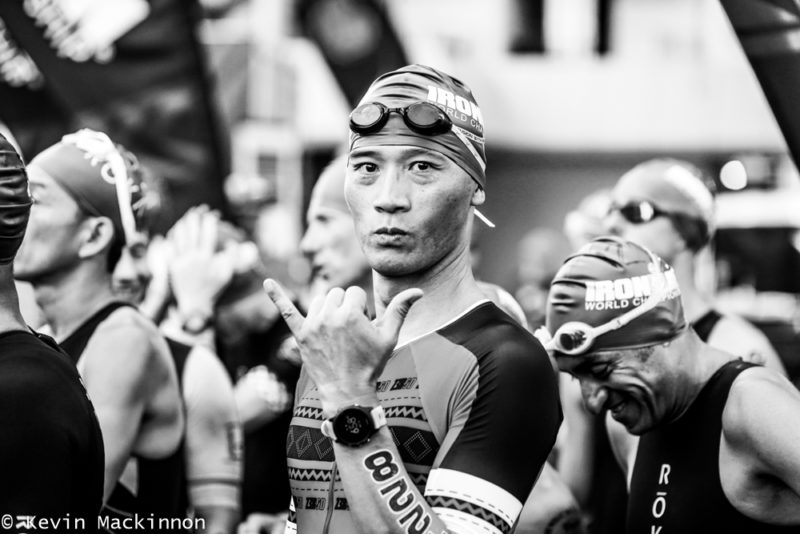The Iron Manifesto: 6 Steps to committing to an Ironman in 2022
Are you really ready for a full-distance race?
 Photo by:
Kevin Mackinnon
Photo by:
Kevin Mackinnon
As a Triathlon Magazine Canada reader, you are aware of the mental and physical benefits of training and competing in triathlon. And, like many triathletes who have made the typical progression from sprint- to Olympic- then half-distance, you have probably wondered: “Am I ready for a full-distance race?” And, like many triathletes, you are saddled and blessed with the responsibilities of life in 21st century Canada: a job, a spouse, children, as well as all those other duties (some more pleasant than others) that require your time and money.
So now, with some sense of normalcy returning to the triathlon scene in Canada, you feel you are ready to take the plunge to take on your first full-distance event. Before you whip out that credit card and commit to a life-altering experience, though, here’s some hard-earned advice from those who have gone through it before you.
#1: Get Solid
The first thing you’ll want to do is ensure your relationships with the people who are most important to you are on solid footing. An full-distance journey built on shaky relationships is akin to mounting a Zipp Sub 9 on a rusty CCM – a poor investment surely to end in snapped nuts, tears and acrimony.
Is this the right year to attempt an full-distance race? Is this the time in your marriage or your children’s lives to be absent for hours? Financially, can you take the hit of increased training and racing expenses? Is your health strong enough (mentally and physically) to rise to the challenges the training and preparation will require? Is your business or job going smoothly enough that you can focus on training? If you are a student, consider if this is the best time to be taking on such a challenge, or would those hours be better invested in your studies? Unless you can confidently say yes to these questions, perhaps this is the year to focus on a race distance that does not require as much commitment.
# 2: Get Dirty
Of the three sports in triathlon, it’s safe to say that cycling will consume the most time and money. And unless your name is Curtis Flock and you can decimate 80 per cent of the field using a $50 beach cruiser, chances are your race machine is going to be carbon, aluminum, or titanium and it’s going to cost close to what you paid for your first car.
Add to that, the regular maintenance of a bicycle and you might want to reconsider polo. Well, it’s not that expensive, but one of the ways that you can save a few bucks is by learning how to do some basic bike repairs.
It’s surprising how many athletes don’t know the value of a clean and well-lubricated chain, optimal tire pressure, or are unable to change a tire when the inevitable happens. Don’t be that chump on the side of the road, or that damsel in distress, with flailing arms and tearing eyes waiting for a knight in shining spandex to save you. Being able to do basic bike maintenance not only saves you money, it will also make you the MVP on your group rides.
#3: Get in Touch
Most triathletes make a traditional progression from the sprint distance to longer-distance races, but some take on a full-distance as their first triathlon. This advice is mainly for them.
It is important to differentiate between necessary and unnecessary suffering. Having to gut out the last set of a pool workout when you are fatigued is one thing, but having to endure knee pain (and the possibility of injury) because your bike seat is too low, or suffer blisters because your shoes are too tight, or your socks are inadequate, is both painful and unnecessary. As any triathlon coach will tell you, listening to your body and being able to respond to what it is telling you, is a key component of a successful full-distance triathlete.
# 4: Get Realistic
Divorce yourself, from time expectations. Unless your name is Luc Van Lierde, don’t expect your first Ironman or full-distance race to go well. In fact, expecting the opposite may be a better idea. Predicting your swim/ bike/ run splits and coming up with a time that you “should” finish in, is a formula for disappointment and a diminished racing and training experience.
Sure, you can have a general idea of about how long you would like to finish each segment, especially if you have friends or family on the racecourse, but goggles can fall off, tires can puncture and energy will wane. And then your prediction is as realistic as that mirage of hula girls and Mai Tais at the mile 21 aid station.
Instead of obsessing over time goals, qualifying for Hawaii, and your winner’s acceptance speech, put that energy into the process of training and race day execution. Let the finishing time take care of itself.
#5: Get Silent
As a first-time full-distance athlete, you will likely become obsessed with everything in the sport. There is no “me” in Ironman, but it’s no surprise that the first letter in Ironman is I, as in, I did this run, I did this many watts, I burned this many calories, and so on.
Although you and the others in your training-circle may be fascinated with each others’ training tales, the other 99.9 per cent of the universe is much less concerned whether your FTP is 101 or 1,001. When socializing in the non-triathlon world, be more of a listener than a talker. If you are asked how your training is going, most people are just being polite Canadians, so just a couple of polite grunts or sentences will suffice.
#6: Get Serious
Although your main goal in doing your first full-distance race is just to finish so you can learn from the experience and improve on it next time, your goal in training and preparation is to do your best.
Don’t base your training around just meeting the time cut-offs so you can get the medal, T-shirt and tattoo. That generous swim time cut-off of 2:20 is there just in case something goes wrong, or you are competing in the 75-plus age category, not as the goal for a person who will not commit to serious training.
Most first-timers seem to have plenty of respect for the 180 km of cycling and train appropriately, but many delude themselves with that final and humbling leg, scoffing that they can simply walk the marathon. Yes, you can walk the marathon, but that shouldn’t be your goal. Make a sincere effort to legitimately run the final leg, walking only as necessary. While it is true you don’t want to let training dominate your life, consider the financial investments you made for the race entry fee, as well as the travel and hotel expenses, and make a similar investment in all aspects of your training.
Some final thoughts
Completing an full-distance triathlon, whether it is your first or 40th, is a major athletic accomplishment and like anything worthwhile in life, it requires dedication and sacrifice. Choosing the right time to attempt such a significant goal will maximize your joy in the journey and enhance your chance of success. When you do hit that intimidating red register button, make a sincere commitment to the tasks required. Balancing your triathlon-life with your real-life will probably get you to the finish line.
Kevin Heinz is a regular contributor to Triathlon Magazine Canada. This story originally appeared in the November 2021 issue.





